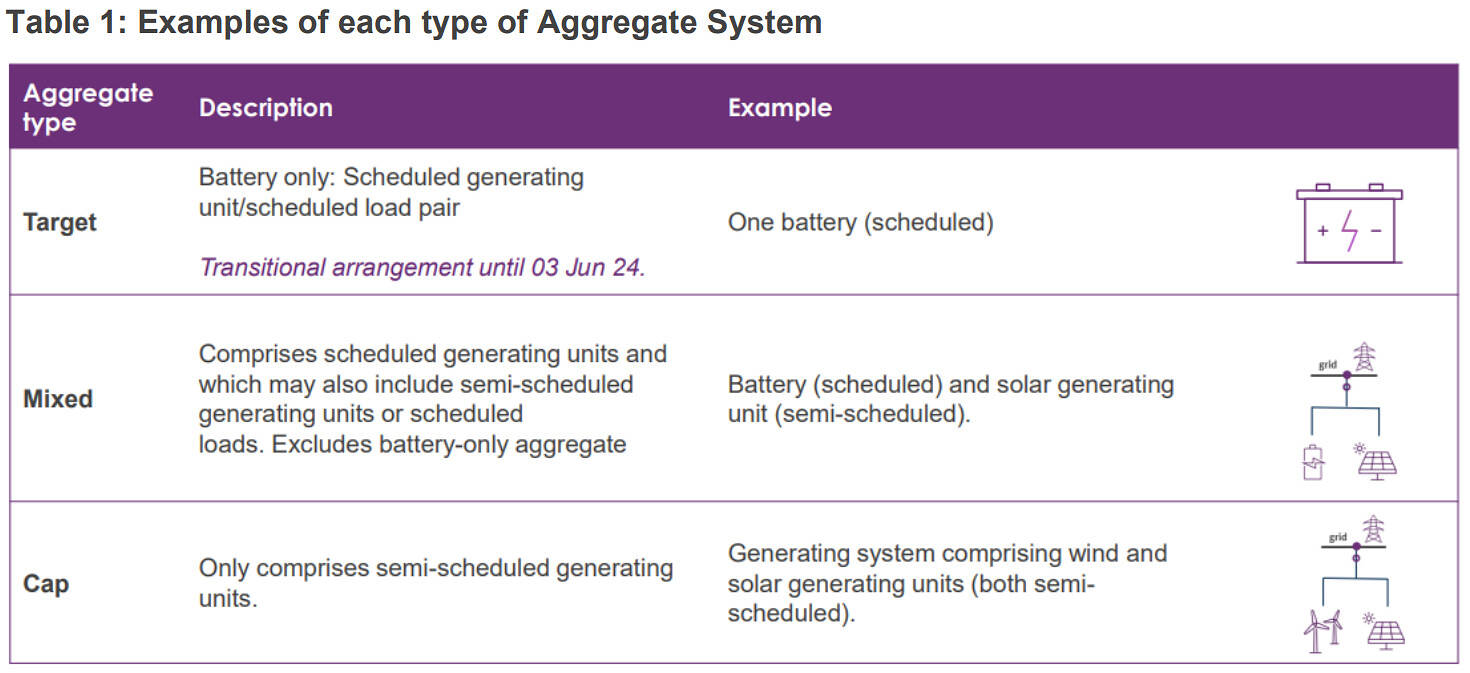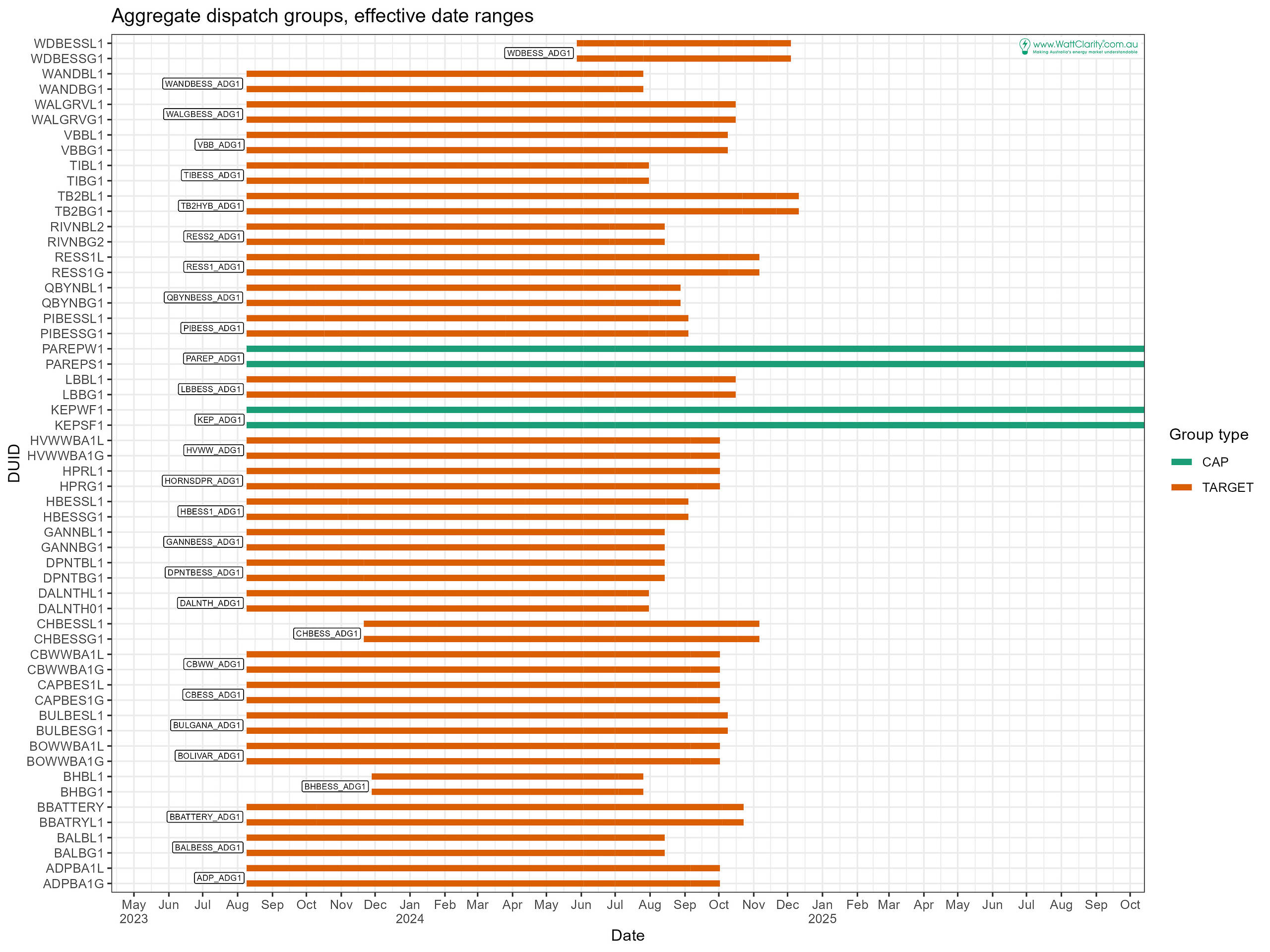A brief glance at the use of aggregate dispatch groups since implementation on 9 August 2023.
Aggregate dispatch conformance (ADC) may be applied when two or more units are part of an aggregate dispatch group (ADG).
The process was introduced in the early days of integrating energy storage systems into the NEM.
There are currently two aggregate types – Cap and Mixed
Target aggregates were retired following battery transitions to BDUs in 2024. Briefly the types are:
- (Target – This was a transitional arrangement to cater for batteries before bidirectional unit classification was possible.)
- Cap –Two or more semi scheduled units would form a Cap aggregate. This draws upon conformance logic similar to semi-scheduled unit obligations.
- Mixed – A mixture of scheduled and semi-scheduled units would form a Mixed aggregate.
The AEMO fact sheet provides further details on how the initiative operates.
Charting adoption of ADGs
The chart of adoption of ADGs is below. We observe:
- Only two Cap groups
- Port Augusta Renewable Energy Park (solar and wind units)
- Kennedy Energy Park (solar and wind units)
- Both of which are ongoing.
- No Mixed groups have been registered.
- Target groups for batteries ended late in 2024 when the units transitioned to BDUs.
Mixed aggregate – not enough upside?
The solar + battery co-location is now common in the NEM, yet these have been operated as separate dispatchable units to-date, without aggregate dispatch conformance.
Yet the Mixed category provides flexibility in how the electricity flows may be managed behind the connection point to conform to dispatch instructions.
Units may still conform to the energy dispatch instructions individually but may also conform in aggregate when the conditions support it. This affords use of the group’s assets for firming VRE (net output) in the aggregate, for example (the upside).
But there is complexity that needs to be incorporated into control and market-facing systems – network constraints may, and regulation FCAS enablement will, require individual conformance. Contingency FCAS enablement requires headroom to be maintained for that service.
And, with the introduction of Frequency Performance Payments, each group registered to participate in ADC is treated as a single aggregate unit for the purposes of assessing frequency performance, regardless of conformance mode.
Perhaps we will see adoption of the mixed category in 2026? Perhaps alternatives such as fully scheduled hybrids will emerge?




Be the first to comment on "Scarce use of aggregate dispatch conformance to-date"